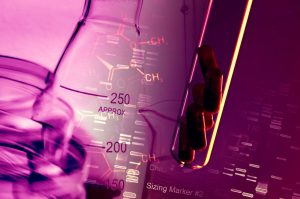Introduction
Drug discovery is a long, costly, and high-risk process. Developing an innovative drug, from initial research to market launch, typically spans 10 to 15 years, with an average cost of $1 to $2 billion. Despite these investments, the clinical success rate remains approximately 10%. As readily available therapeutic targets are progressively exhausted, identifying new ones becomes increasingly difficult, adding complexity and escalating costs in drug development. In light of these challenges, exploring efficient drug discovery methodologies has become a pressing necessity.
The drug development process is divided into three key stages: discovery, development, and commercialization. Among these, lead optimization—a pivotal stage in transforming potential drug candidates into viable therapeutics—has garnered significant attention for its role in reducing failure rates and ensuring the safety, efficacy, and manufacturability of drugs. In recent years, artificial intelligence (AI) has emerged as a transformative tool in lead optimization, promising enhanced efficiency and success rates while minimizing costs. This article delves into AI-driven lead optimization strategies for small molecule drugs and examines their applications and prospects.

Overview of Drug Development and Challenges
The drug discovery process begins with identifying and validating a drug target. This is followed by high-throughput screening of chemical libraries to identify hit compounds with preliminary activity. These hits are subsequently refined and optimized to develop lead compounds, a process termed hit-to-lead. Leads are then further optimized to become ideal drug candidates in terms of potency, selectivity, safety, and pharmacokinetics. This phase, known as lead optimization, culminates in preclinical validation to assess safety before advancing to clinical trials.
Clinical trial failures are predominantly attributed to:
- Lack of clinical efficacy (40–50%)
- Uncontrolled toxicity (30%)
- Poor drug-like properties (10–15%)
- Inadequate market demand or strategic planning (10%)
These statistics reveal that nearly 90% of failures stem from inadequate drug properties, underscoring the critical importance of lead optimization in improving these attributes. The structure of a drug molecule directly influences its properties and clinical outcomes. Traditional lead optimization methods rely heavily on the expertise and intuition of medicinal chemists, which can result in high costs and prolonged timelines.
The emergence of AI-driven methodologies presents a paradigm shift, enabling systematic, data-driven optimization of small molecule drugs.
AI-Driven Lead Optimization Approaches
AI-powered lead optimization employs machine learning (ML) and deep learning (DL) techniques to automate and enhance the refinement of lead compounds. The primary AI-based methods include molecular mapping, distribution matching learning, and molecular local search techniques.
- Molecular Mapping Methods
Molecular mapping focuses on learning chemical transformation rules between pre-optimized and optimized molecules. Leveraging matched molecular pairs (MMPs), this approach mimics the intuitive strategies of medicinal chemists. MMP analysis identifies specific structural modifications that improve molecular properties, offering interpretability and simplicity.
Deep learning models, such as Graph2Graph and Seq2Seq, extend these principles by analyzing molecular representations:
- Graph2Graph models process 2D molecular graphs to learn structural relationships.
- Seq2Seq models utilize 1D molecular strings, such as SMILES, to generate optimized molecules.
Both approaches employ encoder-decoder architectures to learn transformation rules, enabling precise structural modifications.
- Distribution Matching Learning Methods
Inspired by style transfer techniques in image processing, distribution matching aims to align the chemical property distributions of pre-optimized molecules with those of optimized molecules. By shifting the molecular distribution while maintaining structural similarity, this method enhances desirable properties without compromising activity.
Molecular similarity serves as the theoretical foundation for this approach. The principle asserts that structurally similar molecules exhibit comparable physicochemical and biological properties. AI models trained on large datasets apply this principle to ensure optimization maintains biological relevance.
- Molecular Local Search Techniques
Molecular local search techniques explore chemical or latent molecular spaces to optimize target properties. These methods include:
- Chemical space search: Modifying molecular substructures through addition, deletion, or substitution of atoms, bonds, or rings. Techniques like reinforcement learning and genetic algorithms guide these modifications.
- Latent space search: Encoding molecules into low-dimensional latent vectors, optimizing the vectors, and decoding them back into molecules. Popular strategies include gradient ascent, Bayesian optimization, and particle swarm optimization.
Chemical space search operates directly within the molecular space, reducing information loss, while latent space search benefits from easier integration of regularization and structural priors.
Key Properties in Lead Optimization
Lead optimization focuses on improving key attributes of candidate molecules, which are classified into:
- Physicochemical properties: Lipophilicity, solubility, and stability.
- Pharmacological properties: Potency and target selectivity.
- Pharmacokinetics: Absorption, distribution, metabolism, and excretion (ADME).
- Toxicity: Minimizing adverse effects and toxicity.
Additional metrics include penalized logP (PlogP) and quantitative estimate of drug-likeness (QED). PlogP assesses lipophilicity and synthesis complexity, while QED evaluates a compound’s drug-likeness. Optimizing these metrics enhances the likelihood of successful drug development.
Challenges and Future Directions
Despite its potential, AI-driven lead optimization faces several challenges:
- Lack of Interpretability
AI models often function as black boxes, providing little insight into the rationale behind molecular optimizations. This limits trust and adoption, especially given the high costs of subsequent clinical development. - Multidimensional Optimization
Most current models excel at optimizing a single property but struggle with balancing multiple attributes. Multi-objective optimization methods, while promising, remain inadequate for complex, high-dimensional problems. - Limited Generalizability
AI models rely heavily on training data and often fail to generalize to novel molecular structures outside the training set. This restricts their applicability to unexplored chemical spaces.
Conclusion
Artificial intelligence is transforming lead optimization in small molecule drug discovery, offering unparalleled efficiency and accuracy. By automating chemical modifications and leveraging large datasets, AI can significantly reduce costs and timelines while improving success rates. Ongoing research into interpretable models, multi-objective optimization, and robust generalization strategies will further enhance the utility of AI in drug discovery. As these advancements materialize, AI-driven methodologies are poised to revolutionize pharmaceutical innovation, accelerating the development of safer and more effective therapeutics.
